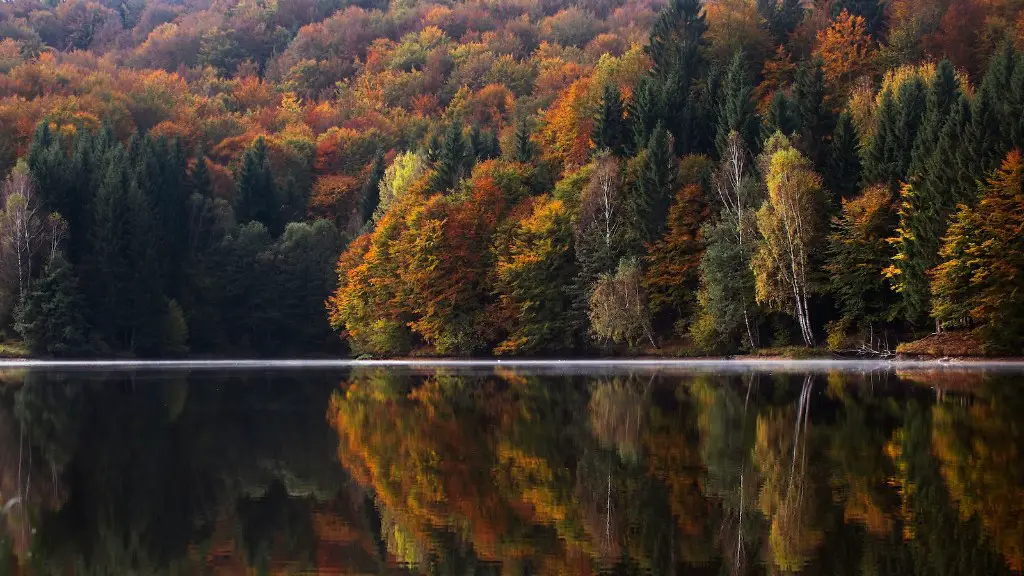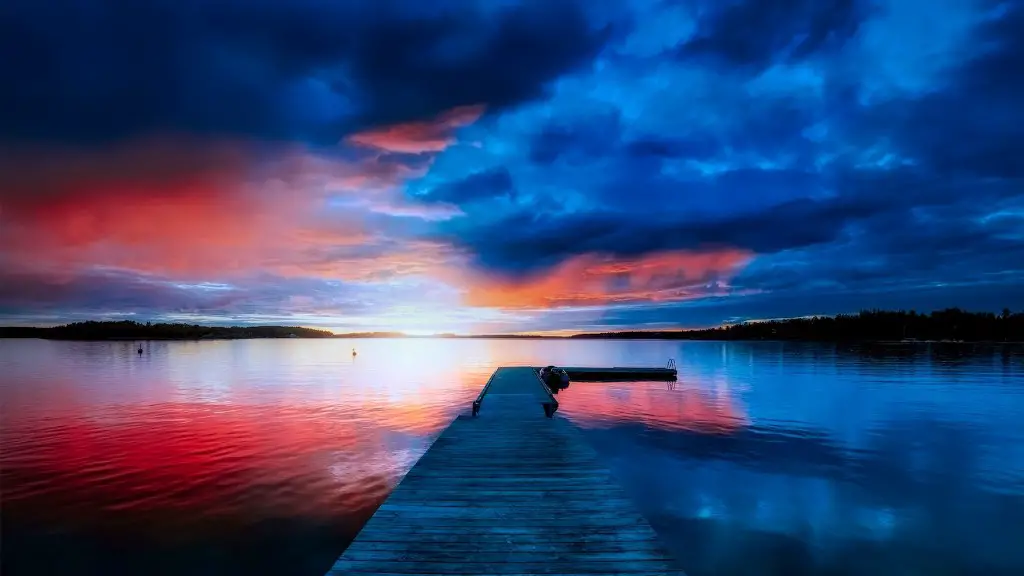Few rivers in the world can compare to the might of the Amazon. Stretching over 4,000 miles from the foothills of the Andes mountains to the Atlantic Ocean, this river basin is home to the largest rainforest on the planet and is thought to contain one fifth of the world’s freshwater. It’s no wonder then that the Amazon has been called “the lungs of the world.” The river was first discovered by Europeans in the early 1500s during the age of exploration. Spanish explorer Vicente Yanez Pinzon was the first to set eyes on the river, though it was his brother Martin who actually sailed up its length. The river was given its name by another Spanish explorer, Francisco de Orellana, who was the first to navigate its entire length. He named it after the legendary Amazons of Greek mythology, a tribe of warrior women. Today, the Amazon river is an important part of South American life and is also a major tourist destination. Every year, thousands of people come to experience the river’s beauty and vastness firsthand.
The date when the Amazon River was “discovered” is a matter of some debate. In 1541, Spanish explorer Francisco de Orellana set out to find the fabled city of El Dorado. Instead, he and his men become the first Europeans to travel the length of the Amazon River. However, it’s likely that native people had been living in the region and using the river for centuries before Orellana’s expedition.
Who first discovered the Amazon river?
Francisco de Orellana was a Spanish soldier and explorer who was the first European to explore the Amazon River. He was born in the city of Trujillo in Extremadura, Spain in 1490. Not much is known about his early life, but he is believed to have served in the Spanish military. He first set sail for the New World in 1519, and he eventually made his way to the Amazon River in 1541.
Orellana’s expedition down the Amazon was fraught with danger, and he and his men faced many hardships. They were attacked by indigenous tribes, and Orellana was even forced to eat his own horse at one point. Nevertheless, he persevered and made it all the way to the Atlantic Ocean. His journey was an incredible feat, and he opened up the Amazon to European exploration. He died in 1546, most likely while still on the Amazon River.
The Amazon River is the world’s largest river by volume, and its exact origin has been debated for centuries. Explorers and scientists have put forth five different rivers in southwestern Peru as the possible source of the Amazon, but no conclusive evidence has been found to support any one of them. The debate continues to this day, and the origin of the Amazon River remains a mystery.
Is the Amazon still unexplored
The Amazon rainforest is one of the most biodiverse places on Earth, and much of it remains unexplored. The remoteness and lack of transport infrastructure make it difficult to access many parts of the Amazon, which helps to protect these areas from exploitation.
The Amazon River is named after the female warriors of Greek mythology, the Amazons. The name was given to the river by Spanish soldier Francisco de Orellana in 1541, after he battled tribes of female warriors in the area.
Who found Amazon River in 1541?
In 1541, Gonzalo Pizarro and Francisco de Orellana set out for El Dorado, and ended up in a disastrous trip down the Amazon. After they split into two parties, Pizarro and his men staggered back to Quito, while Orellana went on to discover and name the Amazon River.
The Amazon basin is the world’s largest rainforest and is shared by nine countries. Brazil contains the largest percentage of the rainforest, followed by Peru, Bolivia, Colombia, Venezuela, Guyana, Suriname, French Guiana, and Ecuador. The Amazon is home to millions of plant and animal species and is vital to the global climate.
How much of the Amazon remains unexplored?
It is estimated that there were between 1,000 and 1,500 enclosed villages in the area, and two-thirds of these sites are yet to be found. This is an incredible opportunity for archaeologists and historians to learn more about the people who lived in these villages and how they interacted with the surrounding environment.
The Amazon rainforest is one of the most important ecosystems on Earth, and its loss is a serious concern. This new data from Brazil’s National Institute for Space Research is very worrying, and highlights the need for urgent action to protect this vital resource.
Can you swim in the Amazon river
The Amazon is one of the most exciting and diverse swimming spots in the world with around 60,000km of inland waterways, countless lakes, lagoons and beaches. The Amazon is home to many different species of fish, plants and animals, making it a perfect destination for a nature lover or adventurous swimmer. If you’re looking for a new and unique place to take a dip, the Amazon is definitely worth a visit.
The ancient ruins of a vast urban settlement around Llanos de Mojos in the Bolivian Amazon have been identified using light-based remote sensing technology (lidar). The settlement was abandonned some 600 years ago.
Where is the most untouched place on earth?
There are still many places on Earth that remain unexplored. The Darien Gap, Gangkhar Puensum, Sakha Republic, Vale do Javari, New Zealand, Greenland, Hang Son Doong, and the deep sea are just some of the most notable examples. These places are often difficult to access, and therefore, very few people have had the opportunity to explore them. This can make them fascinating and intriguing places to visit.
Even though we as humans are constantly intrigued by exploration and adventure, there is still a large portion of the Earth that remains unexplored. 65% of the Earth is reportedly unexplored, which includes large areas of the oceans. Therefore, there is still a great deal of discovery that can be made.
Was the Amazon man made
The Amazon prior to the arrival of Europeans in the Americas in 1492 is commonly depicted as a pristine wilderness dotted with small, simple communities. However, it is actually man-made, one of thousands of earthworks built by remarkable but little-known ancient societies. The Amazon was not only densely populated, but also home to highly complex cultures that farmed the land, mined minerals, and built extensive networks of trade and exchange. While the exact reasons for the decline and disappearance of these cultures are still unknown, their legacy can still be seen in the many ruins and earthworks that dot the Amazon landscape.
This is amazing news! Scientists have found a new river flowing underneath the Amazon river. This river is called the Rio Hamza and is named after the head of the research team who found it. This river is reported to be as long as the Amazon river, but up to hundreds of times wider. This is an incredible discovery that could shed new light on the Amazon basin and its ecology.
Is the Amazon river the oldest river in the world?
The Finke River is a river located in Australia. It is believed to be the oldest river in the world, with an estimated age of 350 million years. The river is approximately 2,000 kilometers long, and is one of the main tributaries of the MacDonnell Ranges. The Finke River is home to a wide variety of wildlife, including several species of fish, reptiles, and mammals.
Jeff Bezos is the founder and CEO of Amazon.com. He was born in 1964 in Albuquerque, New Mexico, and grew up in Houston, Texas. He graduated from Princeton University in 1986 with degrees in electrical engineering and computer science.
After working on Wall Street for a few years, Bezos decided to start his own company. He founded Amazon in 1994, and the company became one of the most successful online retailers. Amazon went public in 1997, and Bezos became one of the world’s wealthiest men.
In addition to his work at Amazon, Bezos has also invested in a number of other companies, including Blue Origin, a space exploration company. He is also the owner of The Washington Post, which he purchased in 2013.
Warp Up
The Amazon River was discovered in 1541 by Francisco de Orellana, a Spanish explorer.
The Amazon River is one of the most important rivers in the world. It is the largest river in South America and the second longest river in the world. It is also the widest river in the world. The Amazon River is important for many reasons. It is a major source of fresh water for millions of people. It is also home to a wide variety of plants and animals.





